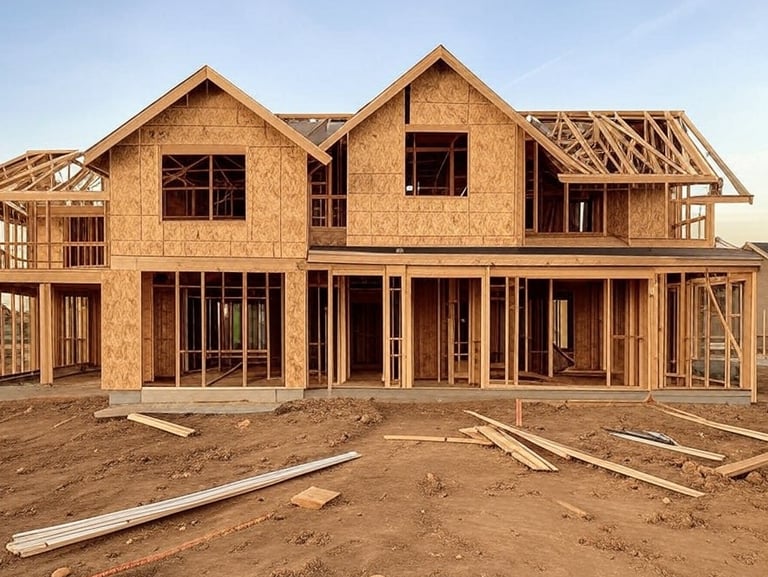
5 Framing Fails that Tank Profits (And How to Nail the Fix!)
3/8/20252 min read
Post by Longhorn Funding on March 8, 2025
Framing is the backbone of any real estate project—whether you’re rehabbing a fixer-upper or developing a new build. A shaky frame can tank your budget, timeline, and resale value. Here are five common framing mistakes that real estate investors, rehabbers, and fix-and-flippers make, plus actionable steps to fix them.
Skipping the Level Check
Mistake: Rushing to frame without ensuring the foundation is level. A 2022 study by the National Association of Home Builders found that 18% of structural issues stem from uneven foundations.
Fix: Invest in a quality laser level (around $100-$200) and double-check your slab or subfloor before framing begins. Spend 30 minutes upfront to save thousands later.Overlooking Load-Bearing Walls
Mistake: Knocking out walls without confirming their structural role—a classic flipper blunder that can lead to sagging roofs or costly retrofits.
Fix: Consult your blueprints or hire a structural engineer for $300-$500 to mark load-bearing walls. If you’re DIY-ing, look for walls perpendicular to floor joists—they’re usually critical.Using Subpar Lumber
Mistake: Opting for cheap, warped, or low-grade wood to cut costs. Warped studs can misalign an entire wall, throwing off doors, windows, and drywall.
Fix: Spend 10-15% more for kiln-dried, straight lumber (e.g., #2 grade or better). Inspect each piece before use—sight down the length to spot bowing.Ignoring Local Building Codes
Mistake: Framing to “what worked last time” instead of current codes. Non-compliance can halt inspections and delay closings—costing fix-and-flippers an average of $5,000 per project (per HomeAdvisor).
Fix: Pull permits and review your municipality’s code online (most cities post them free). Focus on stud spacing, header sizes, and bracing requirements.Poor Nailing Patterns
Mistake: Sloppy or insufficient nailing that weakens joints. Loose frames fail under stress—like wind or heavy drywall.
Fix: Follow the International Residential Code: 2 nails per stud-to-plate connection, 16d nails for framing, and stagger them. A $50 pneumatic nailer speeds this up and ensures consistency.
Takeaway: Solid framing sets up your rehab or flip for profit, not headaches. Walk your site, check your materials, and nail the basics—literally. Got a framing tip that saved your project? Share with us here: facebook.com/longhornfunding
Connect With Us on Socials!
© 2025 Longhorn Funding
We Can Reach Out to You!
Check out our Real Estate Blog!


